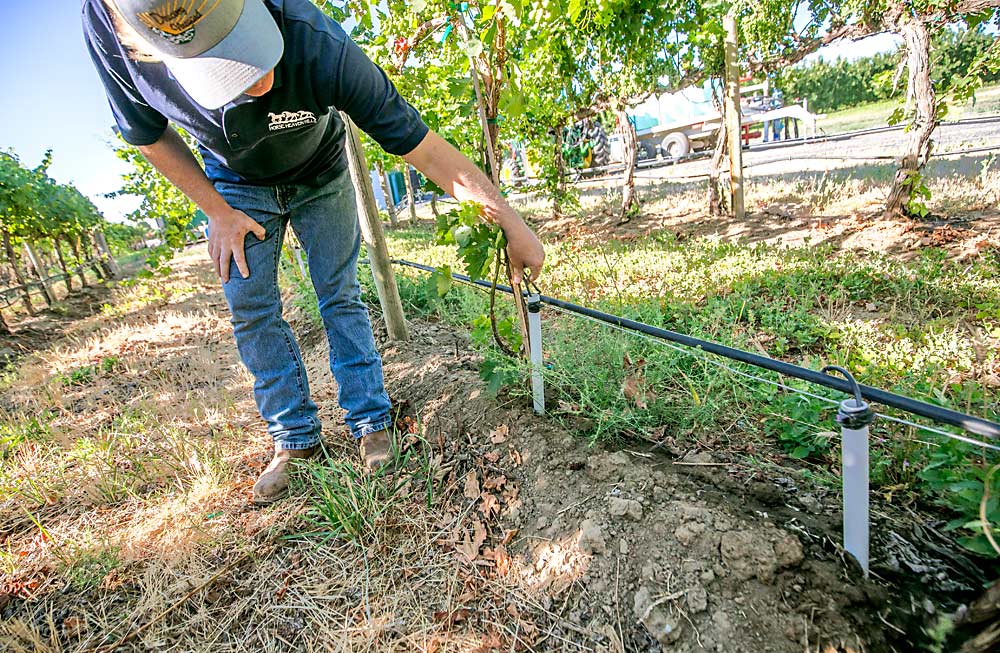
A method of irrigating wine grapes belowground is catching on.
Several vineyards in Washington and other grape-growing areas in the American West are putting to use a system of direct root watering developed by a Washington State University soil scientist.
“These are all commercial growers that want to try it for themselves,” said Pete Jacoby, a WSU professor who developed a way of diverting drip line emitters through a tube inserted into a PVC pipe poked 2 feet into the ground.
Jacoby calls the approach direct root-zone irrigation. The university provided him a commercialization grant to get started. WSU has successfully trademarked DRZ as the moniker and is helping Jacoby to seek licensees.
However, they decided against a patent application because it uses simple, easy-to-find parts, he said. Besides, other products on the market offer ways to deliver water belowground, directly to roots.
Growers in Washington’s Columbia Valley; Milton-Freewater, Oregon; Napa Valley, California; and Phoenix, Arizona, are trying it out, Jacoby said. Under cooperation agreements with WSU, he and the university provide the materials and advise the growers how to install the belowground emitters. In exchange, they donate money to the WSU Foundation, a nonprofit that underwrites Jacoby’s continued research.
Some growers decided to run with the idea and just build their own systems.
After hearing a Jacoby presentation, Oliver May, owner of Discovery Vineyard in Washington’s Horse Heaven Hills near Prosser, rigged up 120 belowground sites in 2022. He had rogued vines infected with grapevine leafroll disease and wanted to use the subsurface irrigation to give the replanted Cabernet Sauvignon vines a leg up on their mature neighbors. He diverted his existing emitters through a spaghetti tube into the pipe stems every 18 or 24 inches.
The system worked so well the first year, he removed the belowground emitters. The block has a history of being overwatered, anyway.
However, he didn’t get the growth he wanted in 2023, so he plans to reinstall them this year.
“I’ll use them this year and next year until I see good canopy growth,” May said.
As a side benefit, the vertical stem pipes help protect his young vines from his weeding tools, he said.
Patrick Rawn, manager for Dineen Vineyards near Zillah, Washington, also tried the belowground emitters to encourage replants in 2019 in a 10-acre Merlot block that was part of Jacoby’s trials.
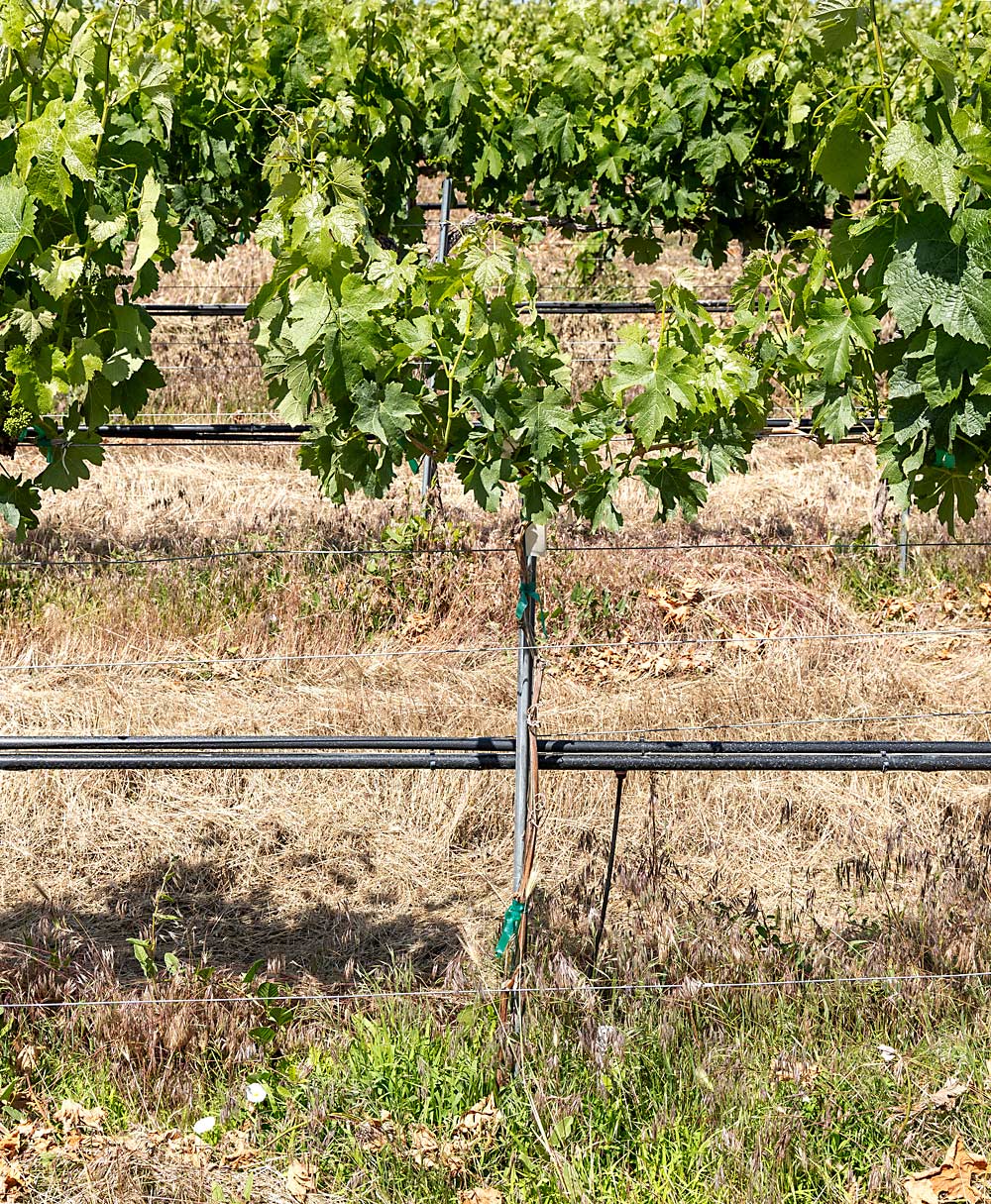
About 25 percent of the vines were infected with the red blotch virus, prompting Rawn’s team to start rogueing just four years after the block was established. The difference between the replants and the mature vines is between four and seven years.
Rawn liked the results.
“I think there is a lot of merit to the idea for both replant scenarios as well as being the irrigation system,” he said.
Mechanical weeding is a head-scratching issue. Rawn said the emitters were at risk of being broken by the weeding tools, though, as May said, the PVC pipes helped protect the younger vines.
The Dineen trial was funded by a grant from the Washington State Wine and Grape Research Program, specifically to measure the replant benefit, Jacoby said. The boost was small at Dineen Vineyards because the “mature” vines were young to begin with, meaning they competed less with the replants.
Jacoby envisions subsurface irrigation as a full-block irrigation tool with parallel delivery pipes and tubes operating independently from the aboveground drip emitters. Growers would use conventional water for most of the year and switch to subsurface for hot spells.
Trials of that nature have shown a 35 percent reduction in water use, he said.
He also believes the system will more efficiently execute deficit irrigation. Most growers deploying deficit irrigation do so at 70 to 80 percent of evapotranspiration; in some Red Mountain, Washington, trials, his system achieved the same results at only 60 percent, he said.
—by Ross Courtney

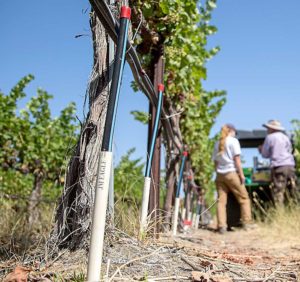
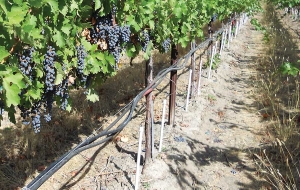
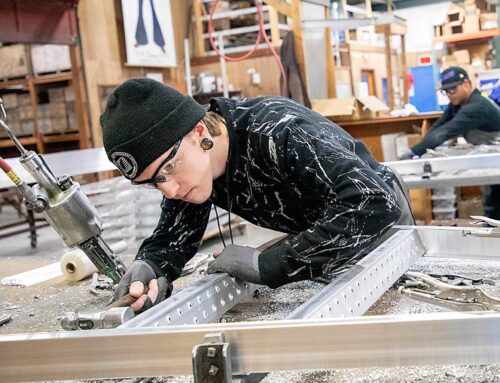
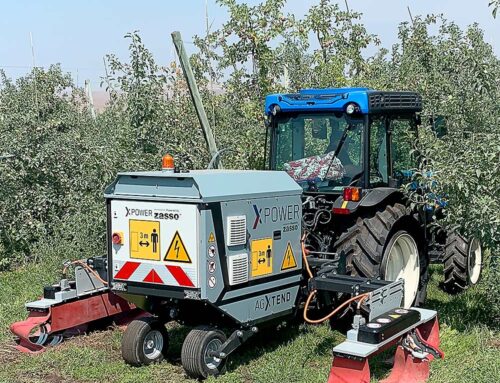
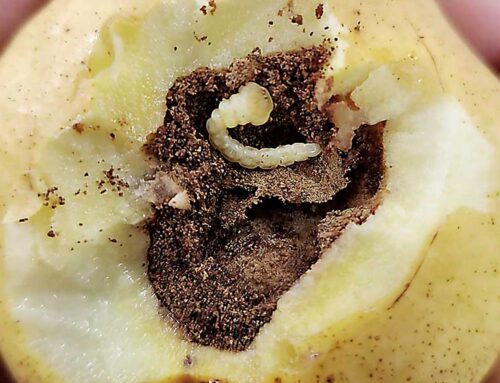


Leave A Comment